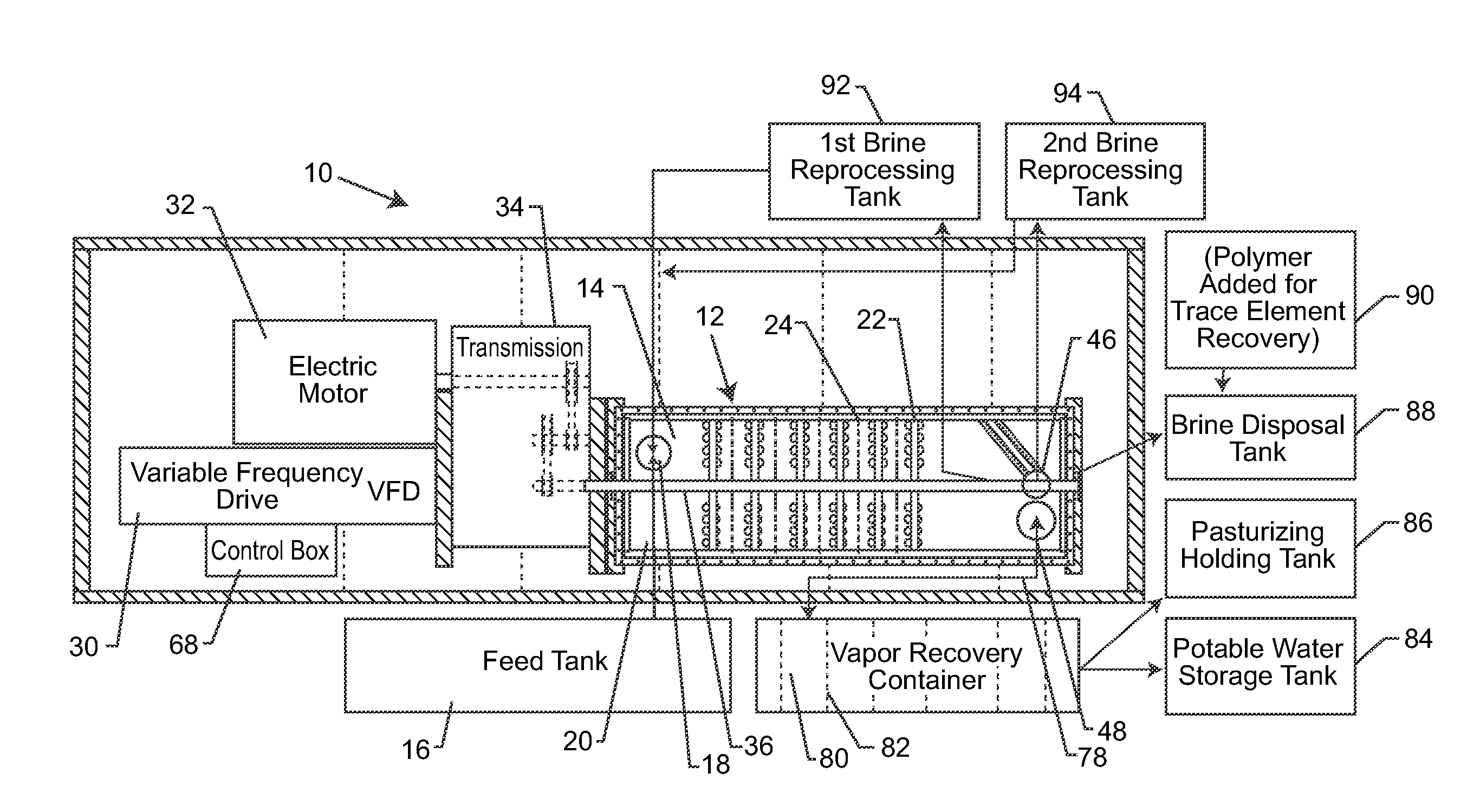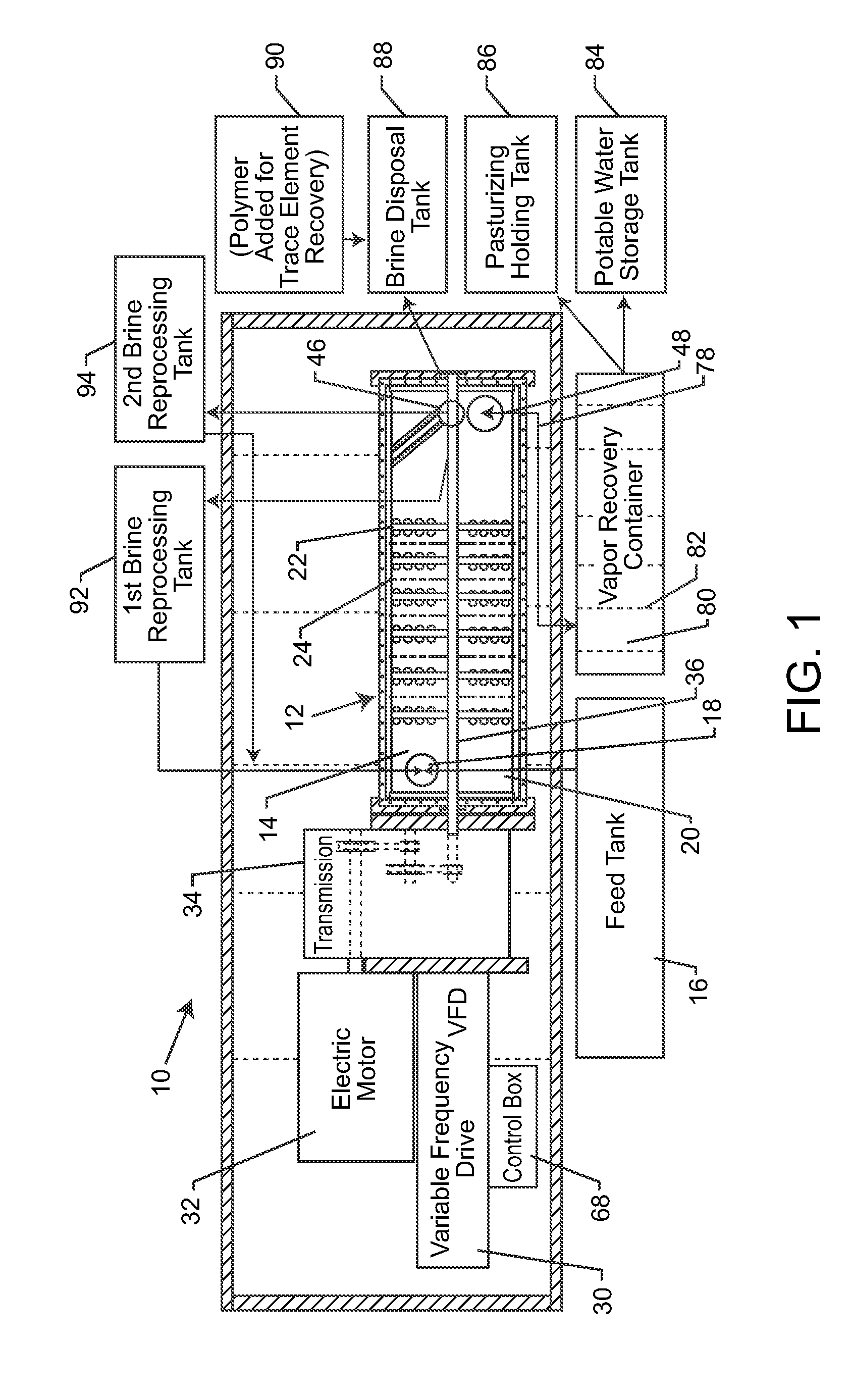System for processing water and generating water vapor for other processing uses
a technology for processing water and other processing uses, applied in water conservation, machine/engine, combination process, etc., can solve the problems of large-scale desalinization, high cost, high infrastructure, etc., and achieve the effect of reducing fluid pressure, increasing fluid velocity, and reducing fluid pressur
- Summary
- Abstract
- Description
- Claims
- Application Information
AI Technical Summary
Benefits of technology
Problems solved by technology
Method used
Image
Examples
Embodiment Construction
[0088]As shown in the drawings, for purposes of illustration, the present invention resides in a system and method for decontaminating water and generating water vapor. The method and system of the present invention is particularly suitable for desalinization of salt water, such as ocean or other brackish waters, as well as, river water or other liquids / slurries. This preferred treatment will be used for exemplary purposes herein, although it will be understood by those skilled in the art that the system and method of the present invention could be used to decontaminate other water sources. The present invention may be used to remove dissolved or suspended solids (decontamination), as well as, heavy metals and other pollutants. Moreover, as will be more fully described herein, the system and method of the present invention can be used in association with relatively clean water to create water vapor, in the form of steam, which has a sufficient pressure and temperature so as to be pa...
PUM
| Property | Measurement | Unit |
|---|---|---|
| distance | aaaaa | aaaaa |
| distance | aaaaa | aaaaa |
| angle | aaaaa | aaaaa |
Abstract
Description
Claims
Application Information
 Login to View More
Login to View More - R&D
- Intellectual Property
- Life Sciences
- Materials
- Tech Scout
- Unparalleled Data Quality
- Higher Quality Content
- 60% Fewer Hallucinations
Browse by: Latest US Patents, China's latest patents, Technical Efficacy Thesaurus, Application Domain, Technology Topic, Popular Technical Reports.
© 2025 PatSnap. All rights reserved.Legal|Privacy policy|Modern Slavery Act Transparency Statement|Sitemap|About US| Contact US: help@patsnap.com



